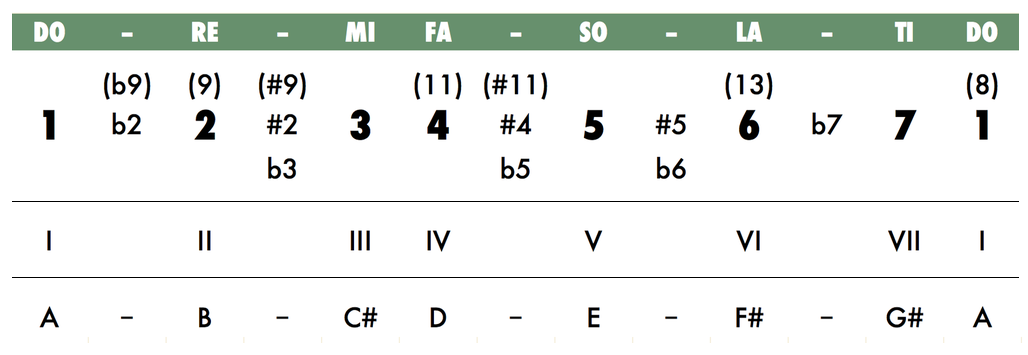Chord Group A
Chord Group Bb
Chord Group B
Chord Group C
Chord Group C#
Chord Group D
Chord Group Eb
Chord Group E
Chord Group F
Chord Group F#
Chord Group G
Chord Group Ab
Movable Chord Shapes
Scales
Fretboard
Ukefarm Flash Cards
Ukefarm Chord Book
Guide to the Ukulele
Key Signatures
Tuning Chart
Transpose Chart
Chord Groups
Chord groups provide the basic chords played for a specific scale.
Universal Key
The chart below shows the relationship between the major scale (DO-RE-MI-FA-SO-LA-TI-DO), and chromatic scale, which divides the octaves into twelve half-steps. By using a number for each tone of the major scale, (DO=1, RE=2, MI=3, etc.) a universal key of numbers is created, with which musical relationships learned in one key can be applied to all keys.
For example, the C major scale (C-D-E-F-G-A-B-C) and the A major scale (A-B-C#-D-E-F#-G#-A) can be written as 1-2-3-4-5-6-7-1. Non-major tones can also be written as numbers (Eb in the key of A would be b5).
Tones that are second octave extentions are listed in parentheses. Equivalent tones in the first octave can be found by subtracting seven (since 8=1, then 9=2, #11=#4, etc.).
